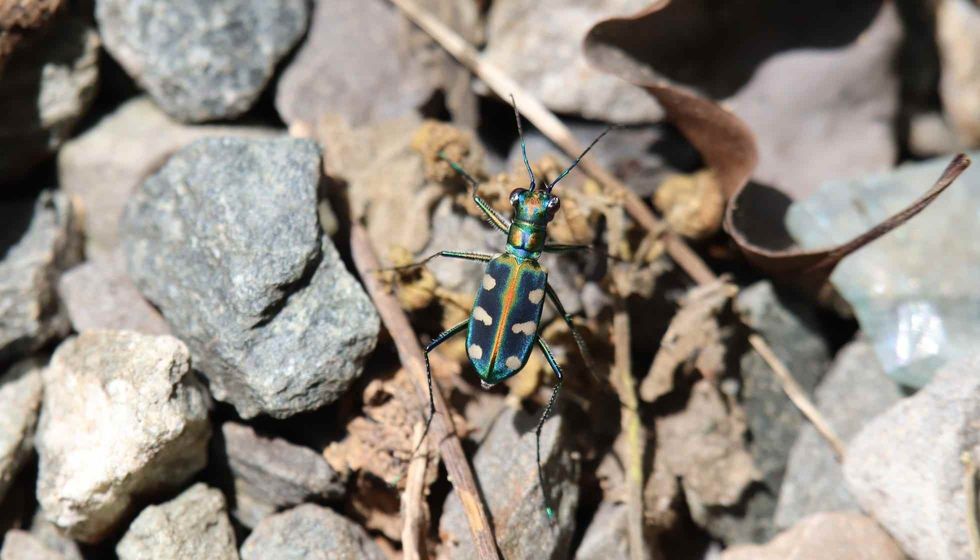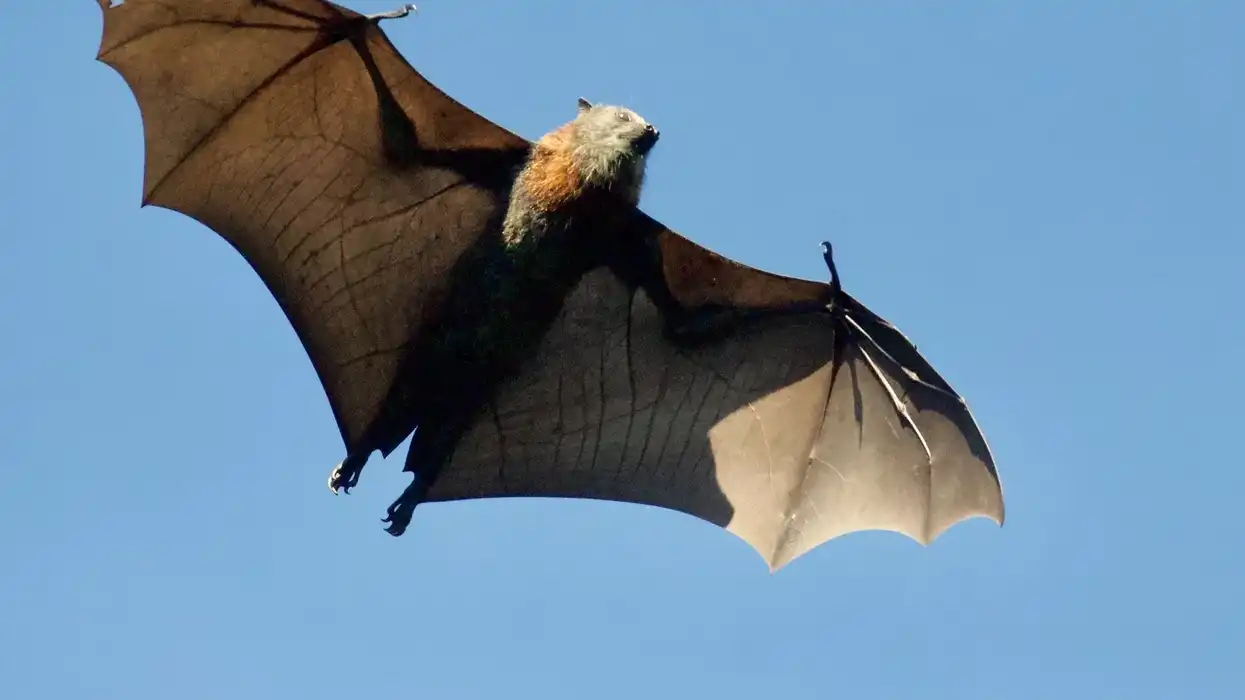The Miami tiger beetle (Cicindelidia floridana) is a rare tiger beetle species endemic to Florida. It was first discovered in the 1930s but it wasn't until 2007 that its population was seen again near Zoo Miami at the Richmond Heights area of Miami, South Florida.
Cicindelidia floridana resides within the pine rockland habitat in Miami, distinguished by limestone outcrops, Florida slash pine, and various kinds of shrubs and herbs.
Cicindelidia floridana is one of the most protected beetle species to date with habitat loss, degradation, and fragmentation as its major threats. Consequent to its rediscovery in Richmond Heights, a petition for conservation of the species and protection of its critical habitat was filed in 2014.
The petition was addressed to the U.S.
Fish and Wildlife Service and in accordance with the federal Endangered Species Act. In 2016, the federal register finally listed the Miami tiger beetle as one of the Endangered species that are at a high risk of extinction.
If you enjoy reading this article about the Miami tiger beetle, you may also want to check out facts about the click beetle and the darkling beetle.
Miami Tiger Beetle Interesting Facts
What type of animal is a Miami tiger beetle?
The Miami tiger beetle is among the 2600 tiger beetle species. It belongs to the genus Cicindelidia in the family Carabidae.
What class of animal does a Miami tiger beetle belong to?
The Miami tiger beetle is an arthropod, which is commonly known as an insect.
How many Miami tiger beetles are there in the world?
The Miami tiger beetle has a critically small population within the Miami-dade County, with a possible danger of extinction. Research shows that this species is only found in three places in the United States, with only 2-45 individuals recorded in each location.
The U.S. Fish and Wildlife Service has classified this species to be of great concern.
Tiger beetles, in general, are in decline and many species are rare and considered endangered. In fact, the Miami tiger beetle is one of the two most threatened species of tiger beetles in the United States, along with the Puritan tiger beetle (Cicindela puritana).
Where does a Miami tiger beetle live?
Cicindelidia floridana was first discovered in its historical pine rockland habitat in South Miami, Florida in 1934.
It took a long while before its existence was confirmed again with observations within Richmond Heights near Zoo Miami in 2007. Making it a very rare species, the Miami tiger beetle population was discovered again in only three specific locations: Metrozoo pineland, the University of CSTARS Campus, and U.S. Coast Guard land.
These areas are based on the studies that laid out the map of where the Miami tiger beetle (Cicindelidia floridana) lives.
What is a Miami tiger beetle's habitat?
The ideal habitat for the Miami tiger beetle is sandy and sparsely vegetated pockets of Miami pine rocklands, which are identified by Florida slash pine, limestone outcrops, and various scrubs and herbs.
Such an ecosystem is very rare and is only found in Florida and the Bahamas. In South Florida, the critical habitat of pine rocklands occurs in Miami-dade County, Miami Rock Ridge, Monroe County, Everglades National Park, Big Cypress Natural Preserve, and in a few other regions along the Caribbean Archipelago.
The Miami tiger beetle is found within a sandy to a loamy sand type of soil of these areas.
Who do Miami tiger beetles live with?
Tiger beetles are generally a solitary species as they would only come together to mate. In their natural habitat in Miami-dade County, Miami tiger beetles were observed to spend most of their time hunting their prey.
How long does a Miami tiger beetle live?
According to research, the Miami tiger is a short-lived species that has an average lifespan of only several weeks up to two months.
How do they reproduce?
Adult Miami tiger beetles are seen to be very active in their habitat from May to October. Generally, the courting habits of tiger beetles include 'mate guarding' wherein the male stays and chases off the female for a short while.
The female tiger beetle would construct a burrow to lay their eggs. In the case of Cicindelidia floridana, they would deposit their eggs in damp soil areas through pine rockland habitat. The average clutch size is three to four eggs.
What is their conservation status?
In accordance with the federal Endangered Species Act, the Miami tiger beetle was petitioned through the U.S. Fish and Wildlife Conservation Service to be listed as Endangered in 2014.
Considering the threats to the Miami tiger beetle species and its habitat, another petition was lobbied in the following year. Thereafter, Florida Fish and Wildlife Service then declared the species status of the Miami tiger beetle as Endangered.
Miami Tiger Beetle Fun Facts
What do Miami tiger beetles look like?
The Miami tiger beetle has an oval body structure and a distinct shiny metallic green shell. It has a shiny dark green dorsal surface and a huge pair of bulging eyes.
The colors of its abdomen range from orange to brown. Like any other tiger beetle species, the Miami tiger beetles would have six long legs, a pair of antennas and long mandibles.
As seen in the photo, the Miami tiger beetle (Cicindelidia floridana) looks quite similar to the six-spotted tiger beetle (Cicindela sexguttata) as they share the same metallic green color. Although, Cicindelidia floridana are only found within pine rocklands habitat in Miami-dade County, Florida, while the Cicindela sexguttata lives in the deciduous forests from Minnesota to Kentucky.

*Please note that this is an image of a green tiger beetle, not a Miami tiger beetle. If you have an image of a Miami tiger beetle, please let us know at hello@kidadl.com.
How cute are they?
Depending on how you like small insects, the Miami tiger beetle can be quite cute especially with its distinct shiny green color. Tiger beetles, including green tiger beetles, are not harmful to humans, making them extra cute!
How do they communicate?
Not much is known about the behavior and communication habits of the Cicindelidia Floridana but tiger beetles are very active predators, especially during the daytime. Both adult and larvae have big eyes and very clear vision that enables them to quickly spot prey and predators.
Their mandibles can also detect vibrations and even danger in their environment. When mating, the pairs would go together and touch each other for a period of time.
How big is a Miami tiger beetle?
The Miami tiger beetle is a small tiger beetle in the United States with its body size range from 0.26–0.35 in (0.7-0.9 cm). Imagine, that's about 10 times smaller than a regular cockroach!
How fast can a Miami tiger beetle move?
Although there is no specific information on the speed of the Cicindelidia floridana, tiger beetles are known to be one of the fastest species on Earth. Despite being tiny animals, they can run up to 120 times their body size in a single second.
The fastest recorded tiger beetle moved at the speed of 5.6 mph (9 kph), which is equivalent to the human speed of 720 mph (1159 kph)!
How much does a Miami tiger beetle weigh?
Being a species with a very small population, not much data has been gathered about the Miami tiger beetle including its weight. However, the average weight of an elephant beetle that is 10 times its size is around 0.18 oz (5 g). We could estimate the weight of the Miami tiger beetle to just around 0.18 oz (5 g).
What are the male and female names of the species?
There are no particular names for the male and female Cicindelidia floridana.
What would you call a baby Miami tiger beetle?
Baby tiger beetles are generally called 'larvae'.
What do they eat?
Both adult and larvae tiger beetles are known to be predatory species. The adults are more notorious and would prey on any kind of insects including flies, caterpillars, and other invertebrates. Their long mandibles or jaws are used not only for prey but also as a defense from potential predators.
Are they poisonous?
Miami tiger beetles are not so poisonous but can still inflict a painful bite. It is not recommended to touch nor hold them.
Would they make a good pet?
The Miami tiger beetle is classified as Endangered species. This means that their population is very critical. It may be illegal to have one at home and it is best to leave them in their natural habitat.
Did you know...
Tiger beetles are well-studied insects. In fact, their biology is very well documented in a publication entitled 'Cicindela', a quarterly journal dedicated to Cecindelidae.
Tiger beetles can avoid predators by making quick short flights just above the ground.
The larvae or young tiger beetle are naturally born hunters and are already able to capture their prey as soon as they hatch from eggs.
Tiger beetles, being great predators, play an important role in their ecosystem. They can actually be beneficial to gardens and farms because they also prey on pests.
Are Miami tiger beetles Endangered?
Urban development, agricultural expansion, and rampant fragmentation have destroyed the population of the Miami tiger beetles.
Such human activities have greatly damaged about 98% of the pine rockland habitat in Miami-Dade County, Florida since the 1800s, which consequently resulted in critical habitat loss for this species. Considering that only 2% of pine rockland has remained, these development and poor management plans of natural resources have definitely contributed to climate change on a large scale.
This also has created damaging impacts to the species Cicindelidia Floridana, and other plants and animals in its range.
In 2014, a petition seeking conservation for the Miami tiger beetle and its habitat was filed through federal agencies, in lieu of the National Environmental Policy Act. However, it was not until 2016 that the U.S.
Fish and Wildlife Service declared the Miami tiger beetle as Endangered species. The federal agency Wildlife Conservation Commission has likewise regarded the Cicindelidia Floridana to be a species of concern.
How did the Miami tiger beetle get its name?
Clearly, the Miami tiger beetle got its name from the pineland rockland habitat in Miami, in which it was first discovered. Tiger beetles, in general, were named after their predatory behavior. Both larvae and adult tiger beetles are notorious hunters, who are greatly feared by other insects. They are literally known to be the 'tiger' of all beetle species.
Here at Kidadl, we have carefully created lots of interesting family-friendly animal facts for everyone to discover! For more relatable content, check out these ground beetle facts and ladybird facts pages.
You can even occupy yourself at home by coloring in one of our free printable Miami tiger beetle coloring pages.










